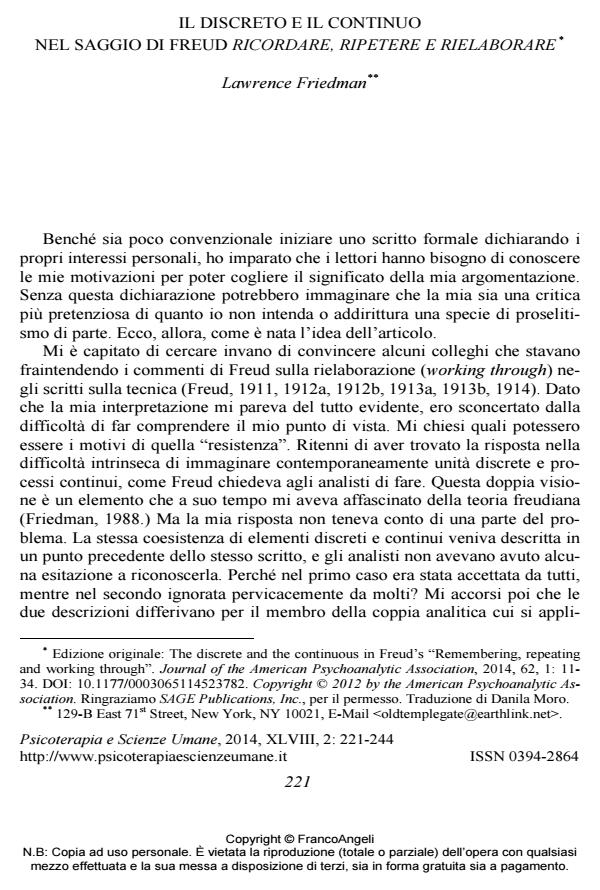The discrete and the continuous in Freud’s "Remembering, repeating and working through"
Journal title PSICOTERAPIA E SCIENZE UMANE
Author/s Lawrence Friedman
Publishing Year 2014 Issue 2014/2
Language Italian Pages 24 P. 221-244 File size 105 KB
DOI 10.3280/PU2014-002002
DOI is like a bar code for intellectual property: to have more infomation
click here
Below, you can see the article first page
If you want to buy this article in PDF format, you can do it, following the instructions to buy download credits

FrancoAngeli is member of Publishers International Linking Association, Inc (PILA), a not-for-profit association which run the CrossRef service enabling links to and from online scholarly content.
There are two crucial passages in Freud’s (1913b) Remembering, repeating and working through that require the analyst to think about entities in the mind while at the same time thinking about the mind as a continuum of activity. Although that is a challenging paradox, the passage that allows the analyst to find discrete memories in the patient’s continuous behavior was easily absorbed into psychoanalytic custom. In the reverse direction, however, the description of the patient finding his way from the analyst’s discrete interpretations to his own continuous experience of strain was most often pasted over with superfluous platitudes. A practical reason for this aversion is suggested.
Keywords: Working through, resistance, Freudian theory, philosophy, durcharbeiten
Lawrence Friedman, Il discreto e il continuo nel saggio di Freud ricordare, ripetere e rielaborare in "PSICOTERAPIA E SCIENZE UMANE" 2/2014, pp 221-244, DOI: 10.3280/PU2014-002002